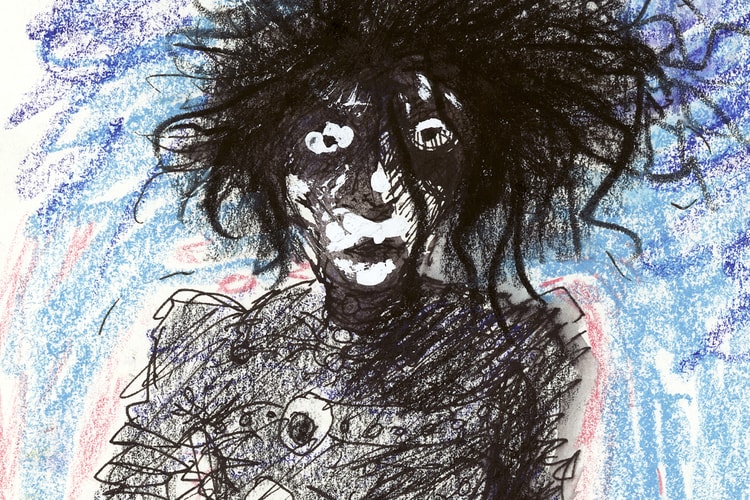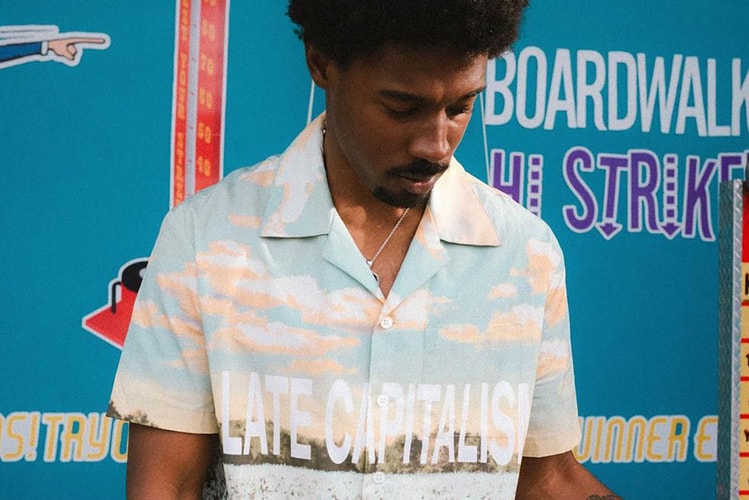The Sari's Historical and Contemporary Significance Explored at London's Design Museum
Curator Priya Khanchandani explores “one of today’s most important global fashion stories”.











“The men who spend their lives within the folds of the sari somehow intrinsically understand the nuances of gender,” reads a quote on display at the Design Museum’s new summer exhibition, The Offbeat Sari. The passage in question is accompanying a short film titled “Sari Men”, which celebrates the weavers, business owners and shop assistants who work in the sari industry.
Albeit a small wall text, the quote is a memorable takeaway from the show, which has been curated by Priya Khanchandani and examines the sari’s historical importance and recent reinvention side-by-side. It somehow speaks to the fact that there is so much to this ubiquitous garment, and how it has become the subject of a so-called “fashion revolution” today.
According to the museum, this is the first large-scale exhibition in the UK to focus on the contemporary sari in India – something that Khanchandani noted in her opening speech, was way overdue.
“The sari is experiencing what is conceivably its most rapid reinvention in its 5,000 year history,” she says. “It makes the sari movement one of today’s most important global fashion stories, yet little is known of its true nature beyond South Asia.”
Across the basement level gallery, over 60 sari’s are displayed upon a set conceived by Liverpool-based Studio Mutt. Some sections explore the different ways in which the garment can be worn, while others present the techniques used to create the fabric and embellishments. Overall, though, Khanchandani’s goal has been to show the presence of the sari as a “site for design innovation”, which goes beyond tradition to break the boundaries associated with identity construction. She adds:
“For me and for so many others, the sari is of personal and cultural significance, but it is also a rich, dynamic canvas for innovation, encapsulating the vitality and eclecticism of Indian culture.”
Visitors experience the exhibition through three sections: “Transformations”, “Identity and Resistance” and “New Materialities”. In Transformations, those who have pushed experimentation through their designs are highlighted, including a distressed denim sari by Diksha Khanna, and a wearable sculpture of sorts by contemporary artist Bharti Kher, which sees a lacquer-coated sari draped around a plinth.
The role of the wearer comes into focus throughout the Identity and Resistance section, which features examples of the ways in the sari can be a “vessel for conveying individual identities”. The garments worn by female demonstrators in rural India such as The Gulabi Gang and The Hargila Army feature here, as does a red silk sari worn by Tamil-Swiss singer-songwriter Priya Ragu.
Finally, the attention turns to the processes used to create sari textiles – spotlighting both traditional and contemporary techniques. Here, a standout piece comes from Rimzim Dadu, who uses super-thin stainless steel wires to create a fluid-looking sculpted embellishment.
“The Offbeat Sari highlights design’s role in a huge fashion story that’s little-known outside India, providing a site for us to reflect, with our partners and lenders in India, and the South Asian diaspora here, on the impact of India’s fashion creativity,” says the Design Museum Director, Tim Marlow.
The Offbeat Sari is on show at the Design Museum until September 17. In other design news, this year’s Venice Biennale is set to open this weekend.



















